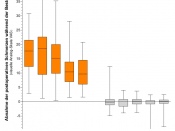Running Head: Week 3
Pain Assessment Tool for Postoperative Pain
[Writer Name]
[Institute Name]âÂÂ
�
Pain Assessment Tool for Postoperative Pain
Introduction
Most of pains are usually adopted methods can be regarded as an assessment scale, including:
⢠Verbal Descriptor / a thing Scale (VD / RS) (Kiel 1948),
⢠Numerical rating scale (NRS) (Downie et al. 1978),
⢠The Visual Analogue Scale (VAS) (Clarke and Spear 1964).
Discussion
Kiel (1948) developed the VDS, which is based on three to five numerically ranked words such as' No ',' small ',' soft ',' moderate 'and' heavy ', for the evaluation of responses to analgesia over a 24-hour period. Its reliability was established by administering repeated his patients with a painful health condition such as angina, and then studying the trajectory of pain from time-intensity curve, in relation to such factors as physical activity, and treatment.
Twenty years later, Melzack and Casey (1968) introduced the present pain intensity (PPI) on a scale of McGill Pain Questionnaire (MPQ), as modified by the VDS, it was a five-point scale with the intensity of the 'no pain' to 'painful'.
Most recently, the VDS was used in conjunction with the VAS to measure pain (Bernston and Svensson 2001, resentment and others. 2001, Kamel et al. 2001). Flaherty (1996) described the scale of a complete and useful for patients with chronic and acute pain. Nevertheless, whether to limit the scope of patients with their pain intensity by choosing one word only, although this may not always reflect their experience (McGuire 1988, Flaherty 1996). There is also potential for ambiguity in some of the words used. 'Soft' for one person may mean 'slight pain in another. Severity of pain may also be confused with its frequency. For example, pain can be severe, but not very often. Someone might...


